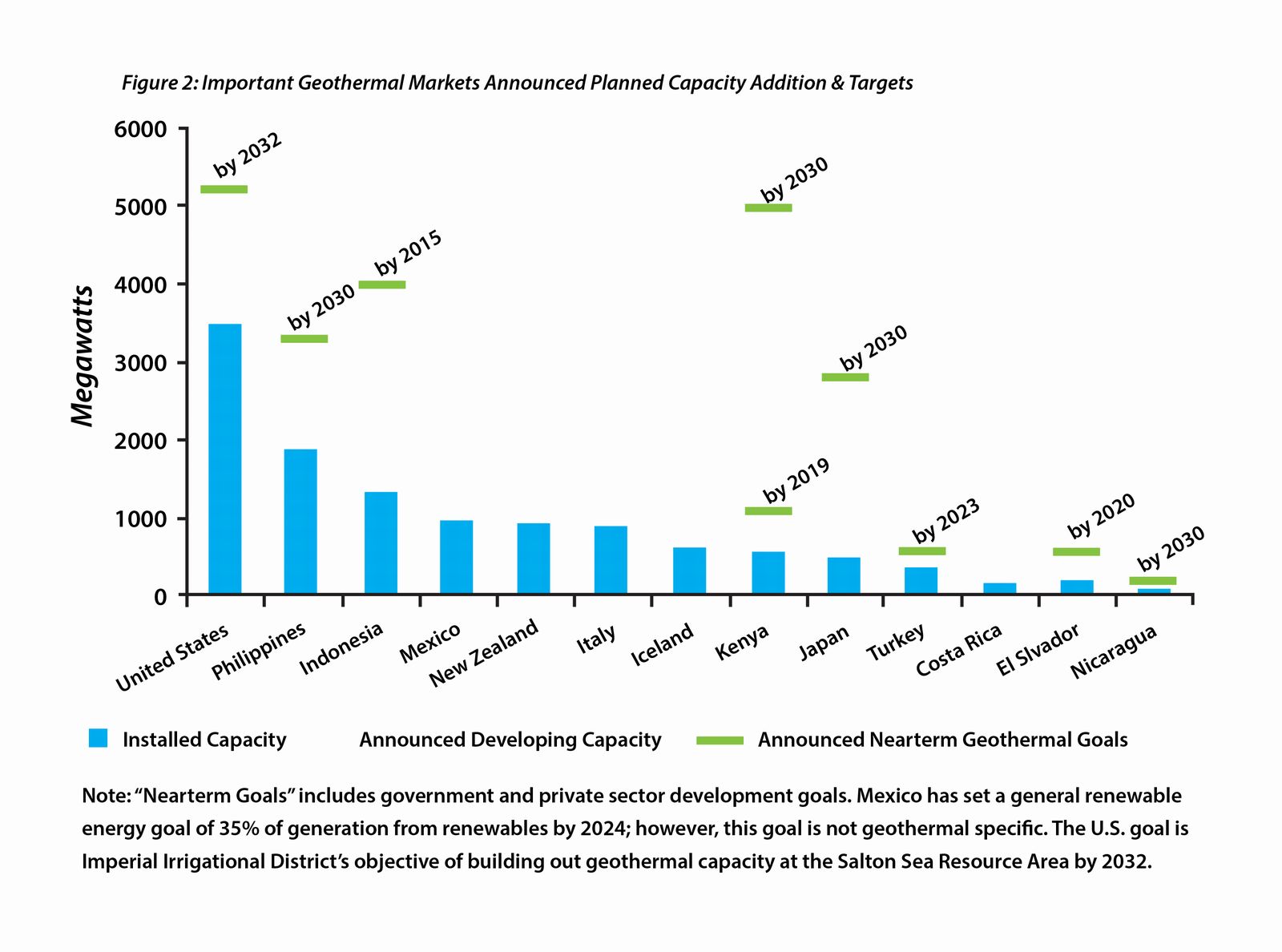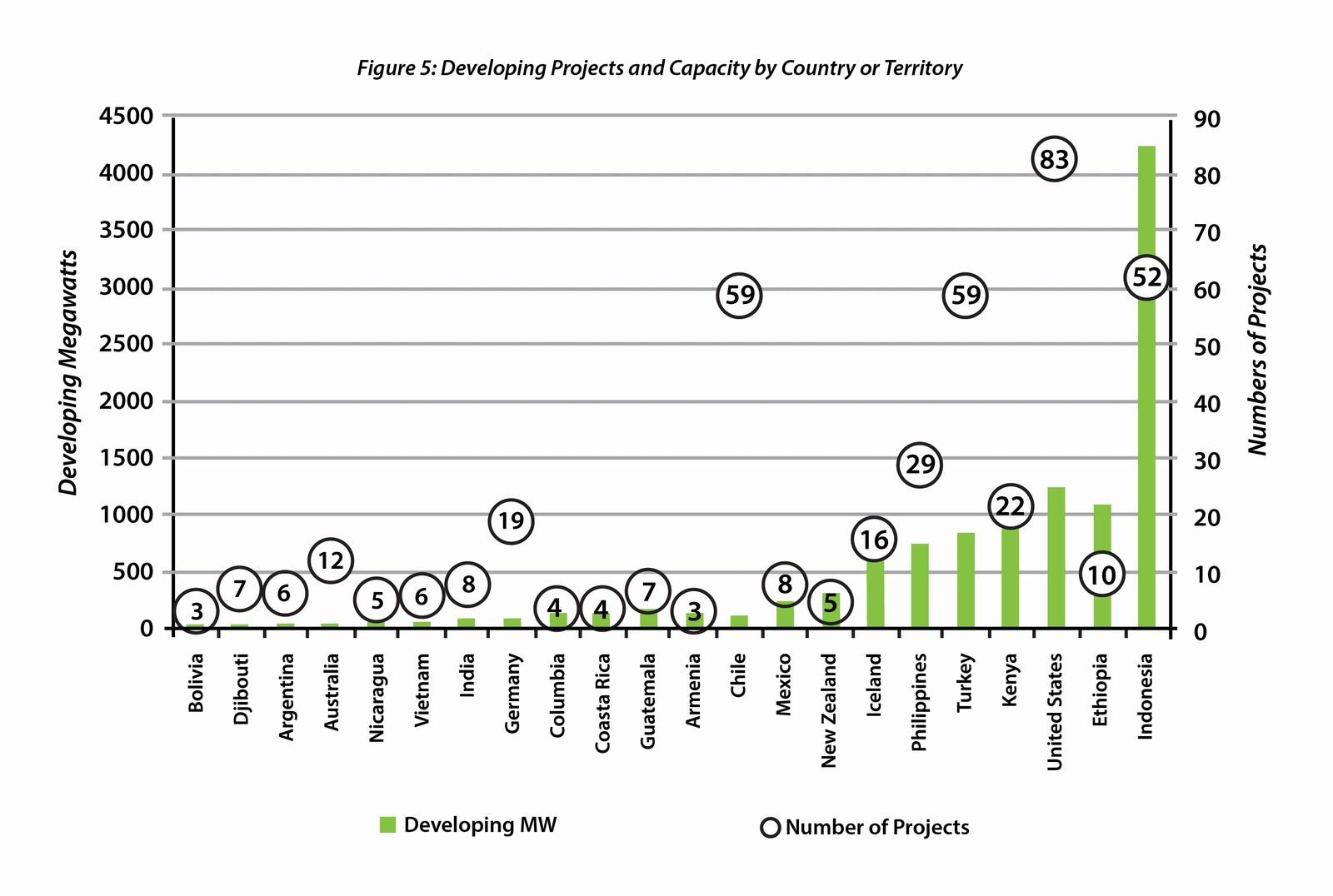The 2015 State of the Geothermal Industry Briefing was held this Tuesday. If you missed it – no fear – here are the takeaways from the day-long conference:
- Geothermal has been growing since the 2005 Energy Policy Act. Because of tax and loan incentives for particular energy productions, the industry has seen an upswing. Karl Gawell, Executive Director for the Geothermal Energy Association, said 34 new projects have come out since 2005.
- But it’s not fast enough. After pointing out the industry’s growth over the past 62 years, Pierre Audinet from The World Bank, said, “It’s still very tiny. The pace is just inappropriate.”
- Because there’s too much standing in the way. Mike Long of POWER Burns and Roe, proposed that the industry needs sector risk profiles, drilling risk mitigation, transactional support for overseas projects, and the ability to replicate success. Tack on an average of 18 to 24 months for initial permit approval (just to explore an area for viability) and the fact that 90% of geothermal resources are located on federal land, and the industry is fighting an uphill battle.
- But Nevada’s taking steps to make it easier. Keynote speaker, Nevada Senator Dean Heller, motivated by “pure frustration” introduced the Geothermal Exploration Opportunity (GEO) Act. Intended to simplify the review process for initial exploration, the GEO Act streamlines a permitting process that Heller says “doesn’t make sense.” Ben Matek, Industry Analyst and Research Projects Manager at the Geothermal Energy Association, credited Nevada and California as being the only two states that have really learned to tap into their resources. He hopes states like Alaska and Hawaii will follow.
- The industry must look internationally. With plenty of money and technology, Doug Glaspey from US Geothermal, Inc. implied the U.S. is maxed out. Thus, the Power Africa initiative has many companies looking at Kenya and Ethiopia, where there’s an urgent need and a booming resource. Andrew Palmateer of EAGP said geothermal was the most cost effective base load option for the region, with 15,000 megawatts of potential geothermal resources.
- Public support is critical. 76 to 90 percent of geothermal projects utilize public debt or equity support, Mafalda Duarte of Climate Investment Funds, pointed out. Therefore, the industry cannot ignore addressing early risk in the public eye. Audinet agreed, adding that the government must be willing to work as a developer to explore the resource and share in drilling costs.
- Knowledge of geothermal energy is extremely fragmented. Participants of the conference agreed: The wealth of knowledge surrounding geothermal energy is held in the hands of a few developers and engineers. Audinet argued, to a sea of nodding heads, that the industry’s political counterparts struggle to understand the industry, its struggles, and its science.
And that’s precisely why we, at The NEED Project, are so busy at work.
